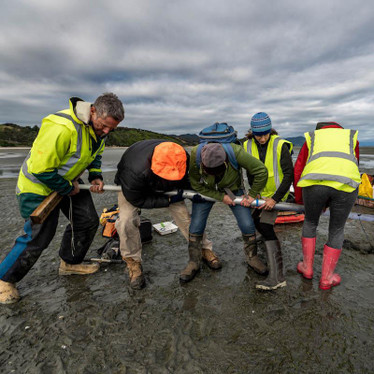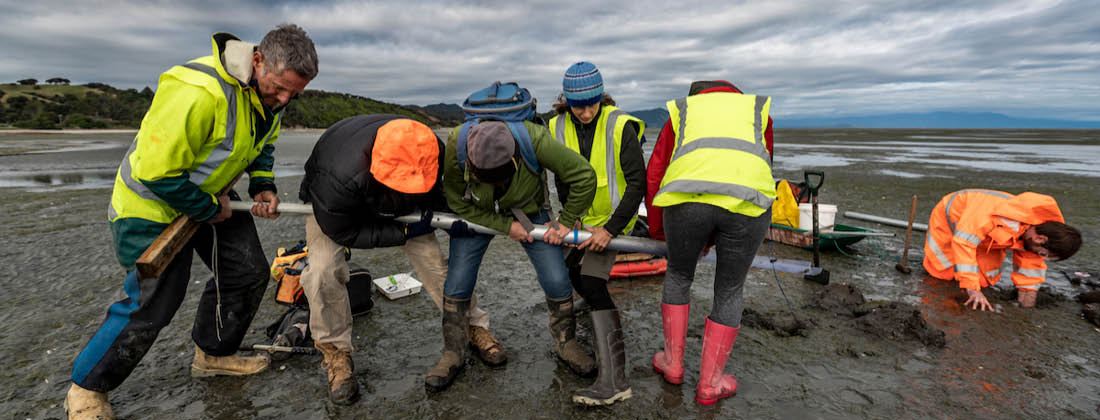
In May 2022, the HealthPost Nature Trust stepped up to support the Tasman Environment Trust’s innovative
‘Core and Restore’ project, which looks to establish the
carbon sequestration potential of coastal and marine environments- specifically salt marsh and seagrass - in TeTauihu (top of the South Island).
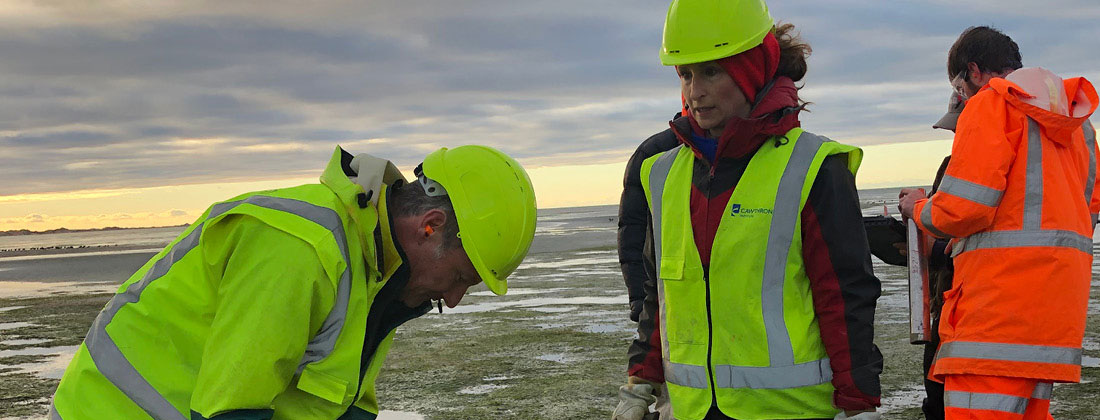
What is Blue Carbon?
Blue Carbon is an area of growing interest internationally - with coastal ecosystems able to sequester up to 10 times the carbon of land-based forests. How? Just like trees absorb carbon, coastal ecosystems can partially sequester carbon through locking the carbon up in the sediment in addition to the plant material, rather than releasing it back into the atmosphere.
Regenerating and protecting delicate ecosystems is something the HealthPost Nature Trust has been involved with since it was formed in 2017. The Nature Trust has worked collaboratively since the beginning with iwi group Manawhenua ki Mohua, the Department of Conservation, and many other conservation, school and community groups. Biodiversity loss and climate change are inextricably linked, and being Zero Carbon certified by Ekos, we’re now offsetting 100% of our carbon emissions through premium local indigenous forest projects that create habitat for native flora and fauna.
Biodiversity loss and climate change are inextricably linked, and HealthPost - Zero Carbon certified by Ekos - offsets 100% of carbon emissions on business operations and parcel deliveries through local indigenous forest projects that create habitat for native flora and fauna.
The tidal flats of Farewell Spit are internationally protected due to their significance for wading and migratory shore birds. Well-known for mass strandings of pilot whales, and the HealthPost Nature Trust Field Station, Te Whare Whakatā - the tidal flats serve as a base for rescue efforts, with some of our staff and local volunteers trained to assist at these events. What’s less known is that approximately 25% of seagrass meadows in Aotearoa are in the Onetahua Farewell Spit area, where our restoration work is focused. So, when we heard about the innovative pilot project to establish another way of valuing this remarkable environment, we pledged our support.
Lauren Walker, Core and Restore project lead, remarks:
“The HealthPost Nature Trust played an instrumental role in supporting and driving the project forward. Without your enthusiasm for a Farewell Spit pilot and your early indication of funding support for it, we would likely not have progressed plans for going out there, so thank you.”
On 11 May 2022, from the HealthPost Nature Trust Field Station Te Whare Whakatā at the base of Farewell Spit, the first core sampling of the seagrass meadows took place.
A pōwhiri by Manawhenua ki Mohua provided a powerful foundation for the mahi and the sampling team were able to hear questions from whānau and build connections for future collaboration.
Lauren recalls:
“The sun beamed out over Farewell Spit at the exact moment when Makere Chapman was offering her karakia on the morning of the field work. It was a powerful moment, and we could feel the sacredness of the place and how privileged we were to be able to work there. We felt very lucky to have Te Whare Whakatā as a great base for our project whānau to rest and base ourselves so close to the sampling sites.”
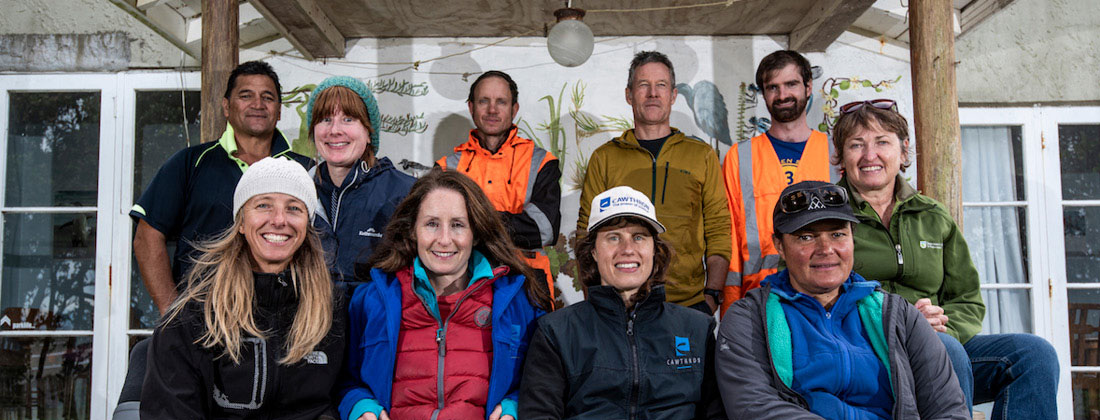
The core-sampling of seagrass meadows
The 10-person team - including scientists, iwi representatives, engineers and geologists from Cawthron, Beca, Ngāti Apa ki te Rā Tō, Manawhenua ki Mohua and the Department of Conservation, towed their gear on sleds through freezing wind to a dense, lush patch of seagrass and set up to begin the sampling. After a few teething troubles in the new environment, the team soon had the technique sorted – largely thanks to Dr Sean Waters (Cawthron Institute) and Dan Chamberose (Beca) being “ willing to put their arms down a soggy hole about half a meter deep to keep the samples intact” Lauren says.

The team collected 12 sediment samples to measure how much carbon is stored in this important seagrass habitat and to understand whether the carbon storage varies as the density of the seagrass changes. They also tested two different core sampling methods to help establish which method is most practical and reliable and would be best for community-based crews to use.
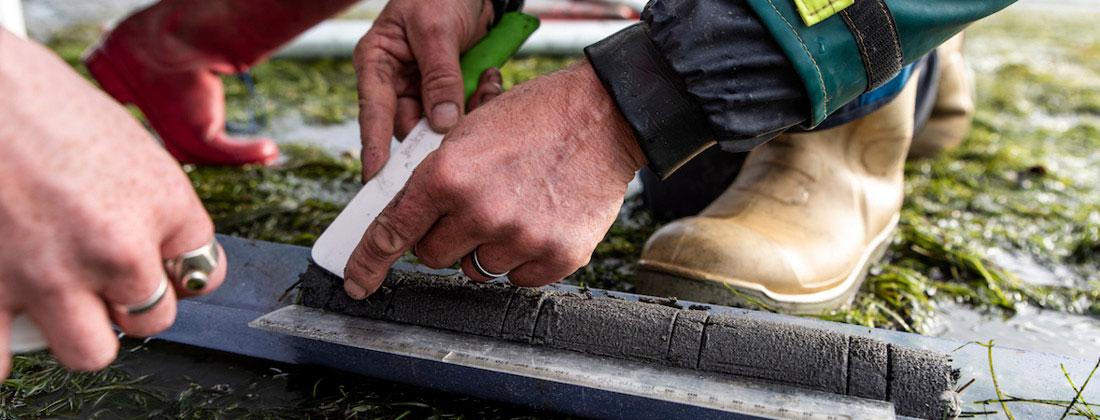
Healthy coastal environments
Healthy coastal environments provide:
- Fish breeding grounds
- Support biodiversity
- Help buffer coastal communities from the effects of sea level rise and,
- Are also vital carbon sinks.
Our carbon partner Ekos has been tasked (by international NGO The Nature Conservancy) with assessing the feasibility of setting up a voluntary ‘blue carbon’ market here in Aotearoa which would provide financial incentive for the preservation and restoration of these coastal environments.
There’s little data available on the carbon storage of coastal environments in Aotearoa specifically, and building research is part of the purpose of this ‘Core and Restore’ project. We do know that many coastal environments have been lost to urban development and agriculture. The pilot project aims to inspire other communities to measure the carbon in their wetlands and estuaries to get a fuller understanding of their importance for all of us.
The ‘Core and Restore’ project has received national recognition and is included as a case study in the first national Emissions Reduction Plan for Aotearoa, New Zealand. It’s highlighted by the Government as an example of how communities are taking action to cut emissions and respond to climate change in Aotearoa - exactly the kind of work that we’re here to support.
|

